I recently read Hemingway’s ‘The Old Man and the Sea’ for the first time. It has the advantage of being both a classic book and short read - so you can finish it in a day and get some quick convenient pretentious satisfaction! I feel like I had some preconception that the book was about an old man living in a lighthouse. I’m not sure where that came from. For those who somehow missed reading the book in school (like me), allow me to give a short summary.
An old man has had no luck with fishing recently. He has few possessions and struggles to feed himself, but his sole companion, a young boy who he taught how to fish, looks after him. One morning he goes out fishing early and alone, and is tempted by a bite on his hook from a monstrous fish. He cannot bring it up and follows the fish far out to sea. He knows he has to tire the fish out if he hopes to bring it up himself. He is alone and must survive on the little water he brought, and by eating the smaller raw fish he catches, all while holding the line on his prize. Eventually, after days, he succeeds in bringing up the fish. It is an enormous marlin, too large for him to bring into the boat. He must lash it alongside. However, on the sail home, the prize marlin is attacked by sharks to the point that by the time he gets into port, there is no meat left. The old man is exhausted, but the young boy is there to welcome him.
Firstly, the book contained a few direct references to Sargassum, which made me so happy to see:
I’m interested to know what is meant by the phosphorescence associated with Sargassum - this is mentioned a few times in the book. Is it a kind of bioluminescent plankton perhaps?
The second anecdote really delighted me because it depicts some important life history information about Portuguese man o’wars that you would never be able to observe if you only see them on the beach. Man o wars have quite a lot of control over their ‘sails’ - the blue balloon floating on the surface of the water, as well as their tentacles. They may be the only animal that actively sails - their balloons are made of muscle fibres and they can flex or relax them to change the ‘sail’s’ rigidity. They can also deploy their tentacles as ballast. And - man o’ wars will periodically dip their sails in the ocean to keep them from drying out, a fact I only learned recently and which the book depicts.
In addition, the book specifically mentions the man o’ war fish, something that only appears with the man o’ war on the high seas. These curious fish are parasites to man o’ wars. Agile swimmers, they dodge the stinging man o’ war tentacles, and eat the man o’war’s non-stinging tentacles.
The book also mentions how man o’war tentacles can get caught around a fishing line and sting you as you bring it in - this has not happened to me with fishing line, but I have watched it happen while bringing a hydrophone deployed on a long wire back into the boat - fleshy man o-war tentacles were tangled around it, hard to see, but packing an unmistakeable punch! Anyone who has been stung by a man o’ war will appreciate the old man’s ire towards them and his fantasy about popping their balloons!
The book is full of anguish, of course - the old man has pushed himself to his very limit to succeed in bringing up his prize marlin. The book does a very good job of immersing you in the physical exertion, but also the mental exertion of what that took. The prize is won, but there is a twist - the sharks begin coming and whittling away the the old man’s life-changing fish. This has the effect of the whole first half of the book being slow, feeling as if it is being drawn out under incredible strain, and the second half of the book going at a breakneck pace, with the reader willing the boat to outpace the unrelenting sharks. We cannot, and the old man cannot, outpace them though, and all we have to show for it is a large, bare, backbone.
The twist, when the old man’s prize is totally stripped away by sharks, caught me completely off guard - as it should, as Hemingway intended it to. However, as a modern reader, it caught me off guard in a second way: in our depleted oceans, there is never a world where I could imagine that number of sharks descending upon someone, in such a short space of time. I don’t doubt that there was a time when this kind of scenario, sharks eating an entire towed fish on the journey home, was happening - there are records of sharks following pirate ships, as well as slave ships, and devouring bodies that were thrown overboard in harrowing scenes - but that kind of abundance of sharks seems impossible today, when shark and ray populations have crashed more than 70% in the past 50 years.
Another scientific comment - the old man refers to his prize marlin as male and honours him, but it’s almost certain the marlin is female, since female marlins grow to much larger sizes than males. The book contains an interesting memory from the old man, when he hooked another large marlin, but it was flanked by a second one that refused to leave even after the first was hooked, suggesting that marlins become attached to their mates. It reminds me more of whales than marlins, but I’m also of the opinion that the artistic choices Hemingway made are more important than scientific accuracy.
I loved the story for its focus on a singular character and their struggle (the old man’s chronicle) - along with highlighting the importance of their support system (the young boy’s devotion to him). I also loved the emphasis on honour and dignity in every action the old man takes around fishing - strengthened by his personal exertion to achieve his prize. And most of all I love that the story simply goes on after the old man loses everything. He does not die of exhaustion, or give up on fishing - his life simply goes on, the young boy supports him, and he plans to fish again. It is a reminder that the actions you take in life should be slow, methodical, deliberate - and that you should do them with honour and dignity, even if they don’t end in success.
The honour aspect reminds me of Neruda’s ‘Ode to a large tuna in the market’
For the period October 30, 2024 - Feb 4 2025
Sorry for my lack of updates to this newsletter! Work trips in December and the holiday season took all my energy away. I was succumbing to burnout in the last few months of 2024 I think, and in 2025 I am resolving to prioritise living in a slower, more sustainable way for my energy levels, and prioritising creative projects and spending time in nature.
📍Tobacco Bay, November 17th
An incredibly small Sargassum frogfish!
📍Tobacco Bay, December 10th
A huge buoy - perhaps it washed in all the way from the US coast. It has now been repurposed and put to good use as a mooring buoy!
📍Cooper’s Island, December 28th
A sea monster ! In reality it is a bloated green moray eel. For more information see my post here.
📍Cooper’s Island, December 31st
Anyone missing a denture? These things are expensive! A first time find for me on the beach. Yes, I did bring it home.
📍Watling Island, 3 January
A turtle plastron bone. My photo on the left, diagram from a turtle anatomy resource on the right. Quite a few green turtle skeletons have turned up in the past few years due to seagrass decline in Bermuda. This is from the bottom part of a turtle’s shell, the plastron. They appear very spiky when the turtle is not fully grown, and over time the plates fuse and become solid when the turtle is older.
📍Baileys Bay, 5 January
This fascinating and extremely fresh porcupinefish (Diodion hystrix) was washed up at Bailey’s Bay. I couldn’t believe how fresh it was. There was no smell. The eyes seemed barely milky. I did pick it up - and it was unexpectedly very heavy. The fish swallow water to puff up, so I wonder if the fish swallowed water before stranding. Their skin is covered in dots and very beautiful close up. Porcupinefish do have toxins in their skin as a defense mechanism, but I believe they can only hurt you if you ingest them, rather than if you touch them.
📍Baileys Bay, 5 January
This is the very first SPROUTED sea bean that I have ever found on the beach. It is a ‘hamburger bean’ (Mucuna sp.), a woody vine native to South America. Look at the tendril! While sea beans are by definition designed to float across seas and germinate on new shores, it is very difficult to sprout and grow them from what I have heard. Books recommend you use a drill to pierce the hard outer shell, for reference. It’s very cool to think this sea bean sprouted on its own. It’s currently in a pot in my yard, and I’m full of hope, but if I’m being real it’s not looking too hot.
📍Tobacco Bay, 10 January
Some very young balloonfish that washed in with sargassum in the high winds. More information can be found in my post.
📍Cooper’s Island, 25 January
A fossil! A prize sea hero.
📍Cooper’s Island, 25 January
A sneak preview - I may make a longer post about this on my instagram account. This is the first ever ‘Mary’s bean’ (Merremia discoidesperma) I have found. This rare and sought after seabean produces a woody liana native to Central America, Mexico and the Caribbean. The seabean itself is famous because of its distinct cross marking (right picture). They are named for the virgin Mary and have some associated folklore. “Historically, people have used Mary's beans as good luck charms and to ward off evil spirits. A woman in labor was assured an easy delivery if she clinched a Mary's bean in her hand, and the seeds were handed down from mother to daughter as treasured keepsakes.” It was a beautiful seed that definitely felt addictive to hold! Possibly imbued with power??
📍Cooper’s Island, 25 January
A car axel - that looked quite out of place on the beach! But there’s something humorous about it, like the axel saved up for this vacation. In reality I suspect that it is a castaway from the airport dump, which collects old vehicles and appliances. The entire thing is a ‘sea fill’ and much of the material is sinking into the ocean. This doesn’t just mean man made objects in the marine environment - but the release of harmful toxins including metals, PAHs, and PCBs into Castle Harbour.
This magnificent <700 lbs bluefin tuna was caught by a Bermudian crew in mid-January. Bermuda has very few records of bluefin tuna catches - less than 20 throughout history from the reading I was able to find. The first record appears in ‘Fishing in Bermuda’ by Graham Faiella and the fish was apparently caught in Mullet Bay in a net in the 1800s. When bluefins are caught, it’s almost always in mid-late January, off Challenger Bank. The tuna are likely feeding off of upwellings generated by our seamounts, on their way to the Gulf of Mexico in time for their spawning season in the spring. This incredible photo was captured by Pamela Mahoney, who saw the monster being brought in at the end of her pilot gig row at Spanish Point boat club - the fish was so large it had to be towed behind the boat!
Now this is an image that requires some explanation - while it’s almost impossible to see, this is the suspected fin of a great white or very large mako shark off of Argus Bank in Bermuda! My friend Sammy Dill had the amazing sighting and was kind enough to let me include the photo. Both these species of shark are ocean wanderers, and pass by Bermuda during their long pelagic migrations.
In a world that is constantly asking to profit off of your time and attention, it is a radical act to: take time for yourself, to rest, to prioritise creativity, to not buy things from big corporations, to make things yourself, to invest in your community. When the world’s problems seem overwhelming it’s important to remember that small actions have immense power - to give you a sense of control, as well as to effect incremental change. This is the anti-capitalist corner where I share small things I’m doing that fall under that umbrella.
Recipe for white soup:
Cook thinly sliced onions in butter and oil (or leave out butter to make the soup vegan) until they get jammy - about 30 minutes.
Add pressed garlic and cook a little longer
Add vegetable better than bullion or other stock cubes, add red pepper flakes, salt, ground black pepper
Add a little bit of dry pantry staples - I use farro and french green lentils. Don’t add too many or the soup will be too thick. Allow dry mixture to get hot.
Deglaze the pan with white wine.
Add boiling water to cover the mixture and cook for 15 minutes (or longer depending on the pantry staples you use).
Add pastina and cook for 5 more minutes - you may have to add more water. Pastina is so delightful and makes this dish!
Add white (cannellini) beans and nutritional yeast.
When everything is cooked, take off the heat and wait for the soup to stop bubbling. Add any extra salt and black pepper to taste, a drizzle of olive oil, and plenty of lemon juice.
This soup is great served with buttered toasted sourdough.
Are you a beachcomber, mudlarker, or outdoor explorer? I would love to have your submissions of things you’ve found on the beach, or wildlife encounters for the ‘Guest Appearances’ section! Message me here or on Instagram to make a submission.
Thanks for reading, and join me next time for more beach bum activities.
Where to find me:
Instagram: https://www.instagram.com/sargassogirl/
Website: http://www.sargassogirl.com/





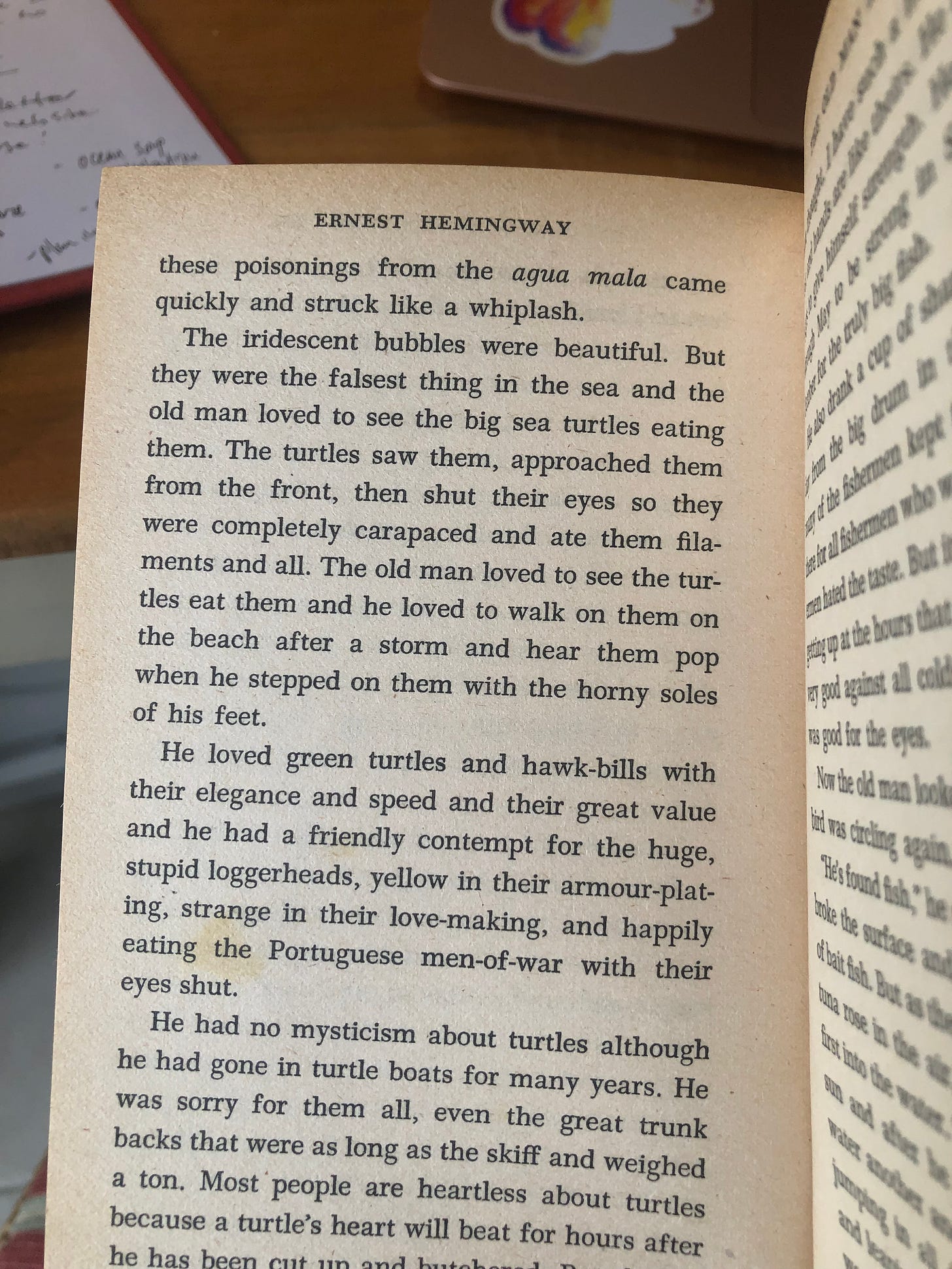



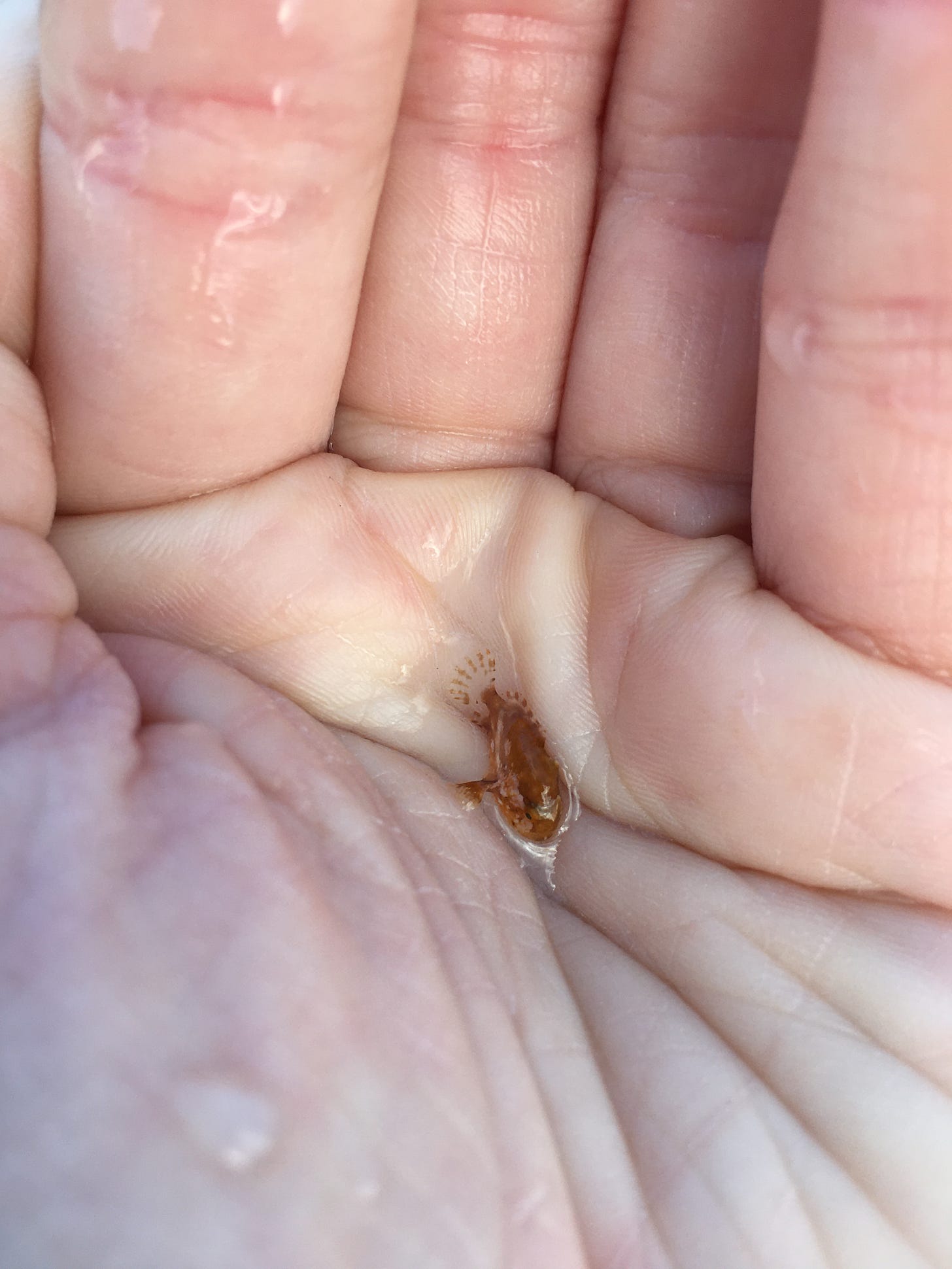
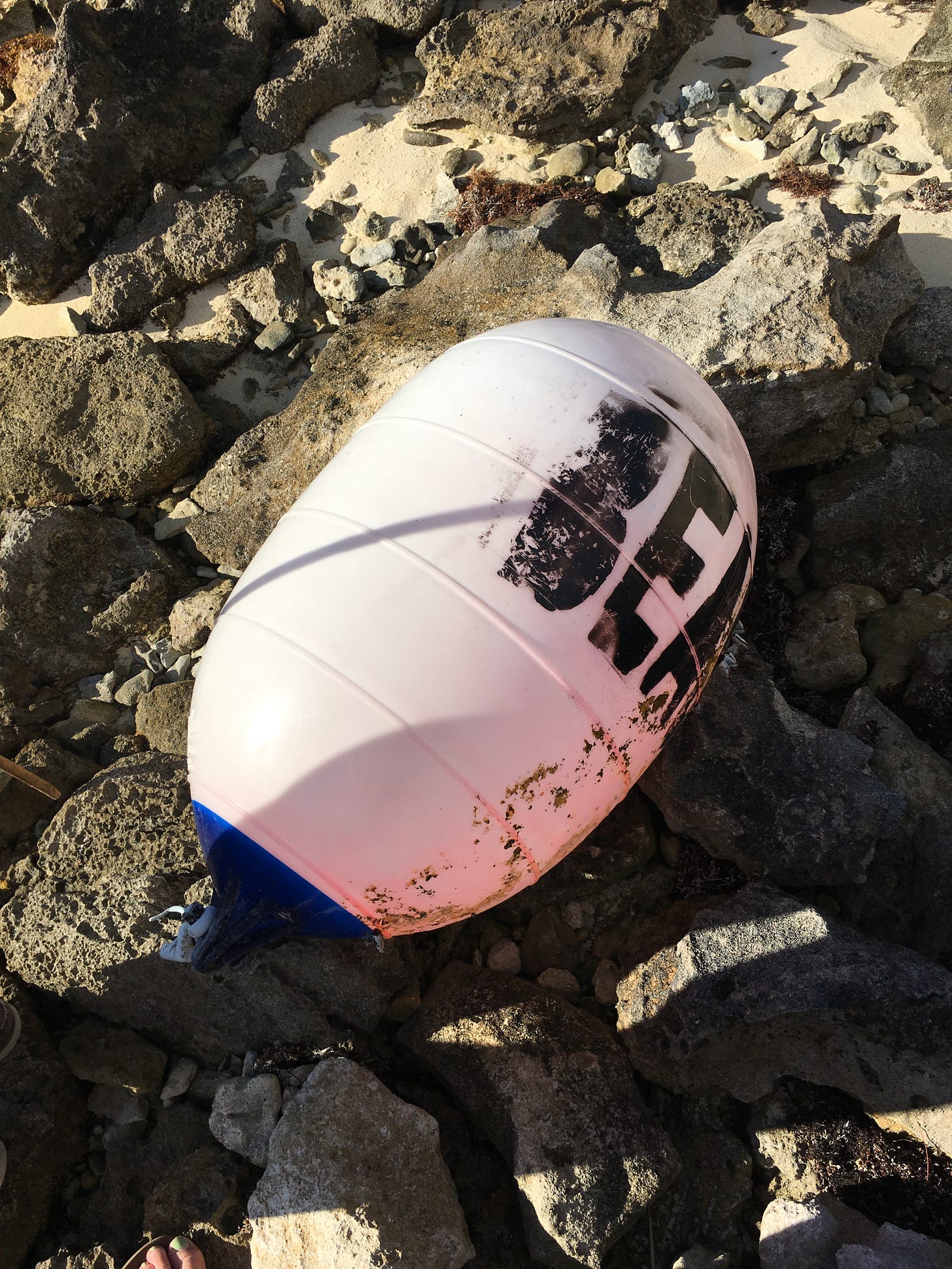
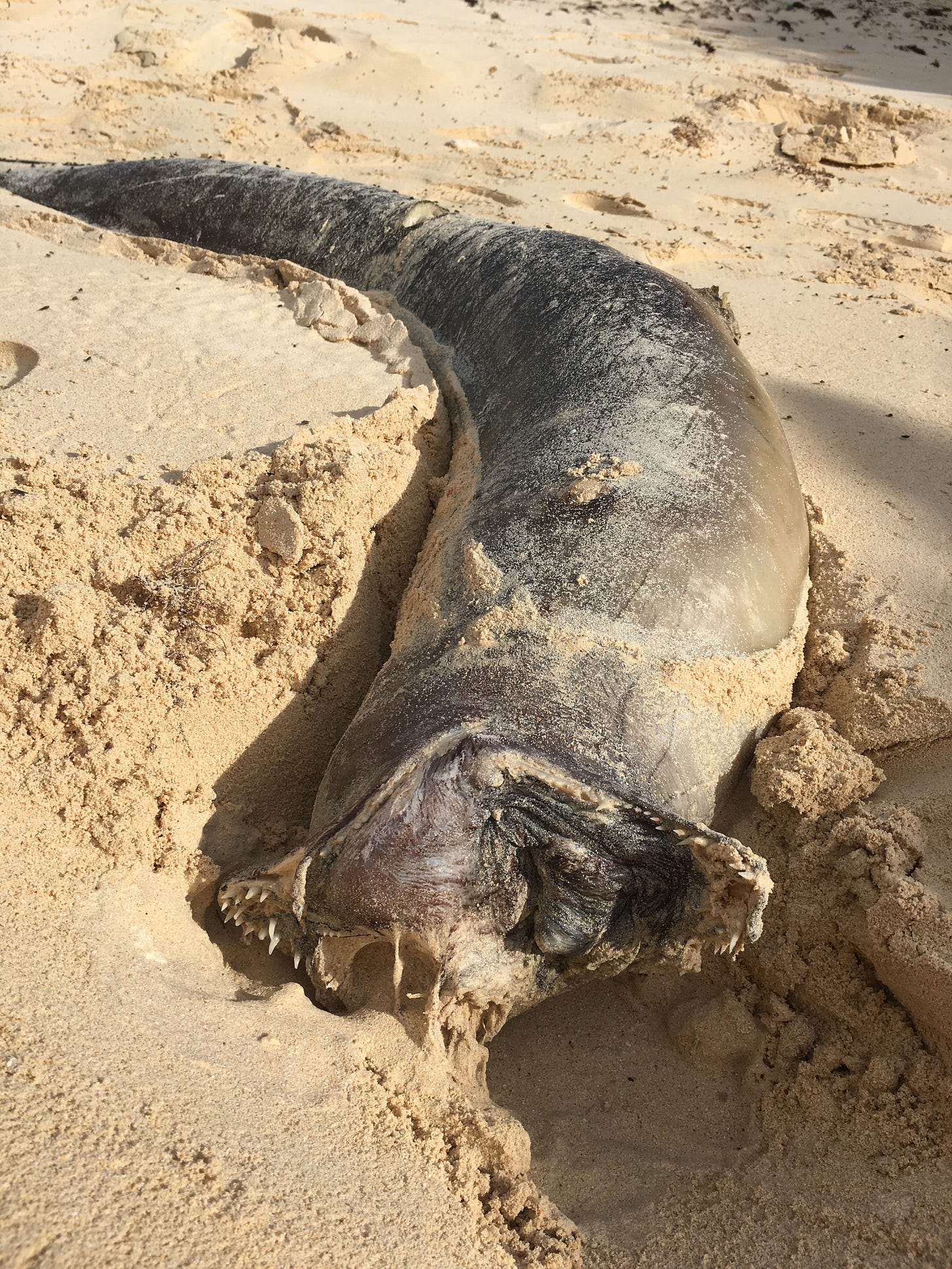
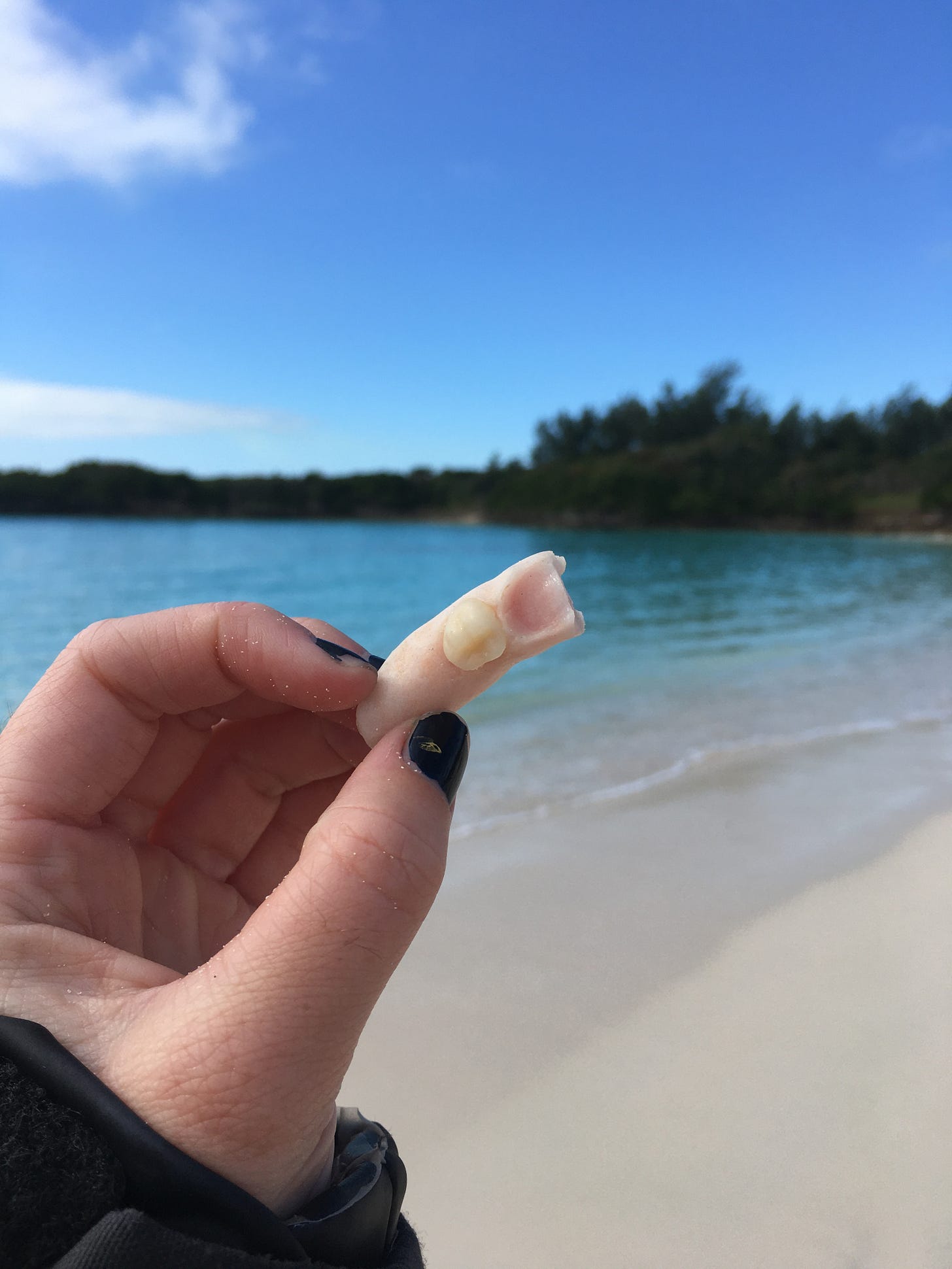




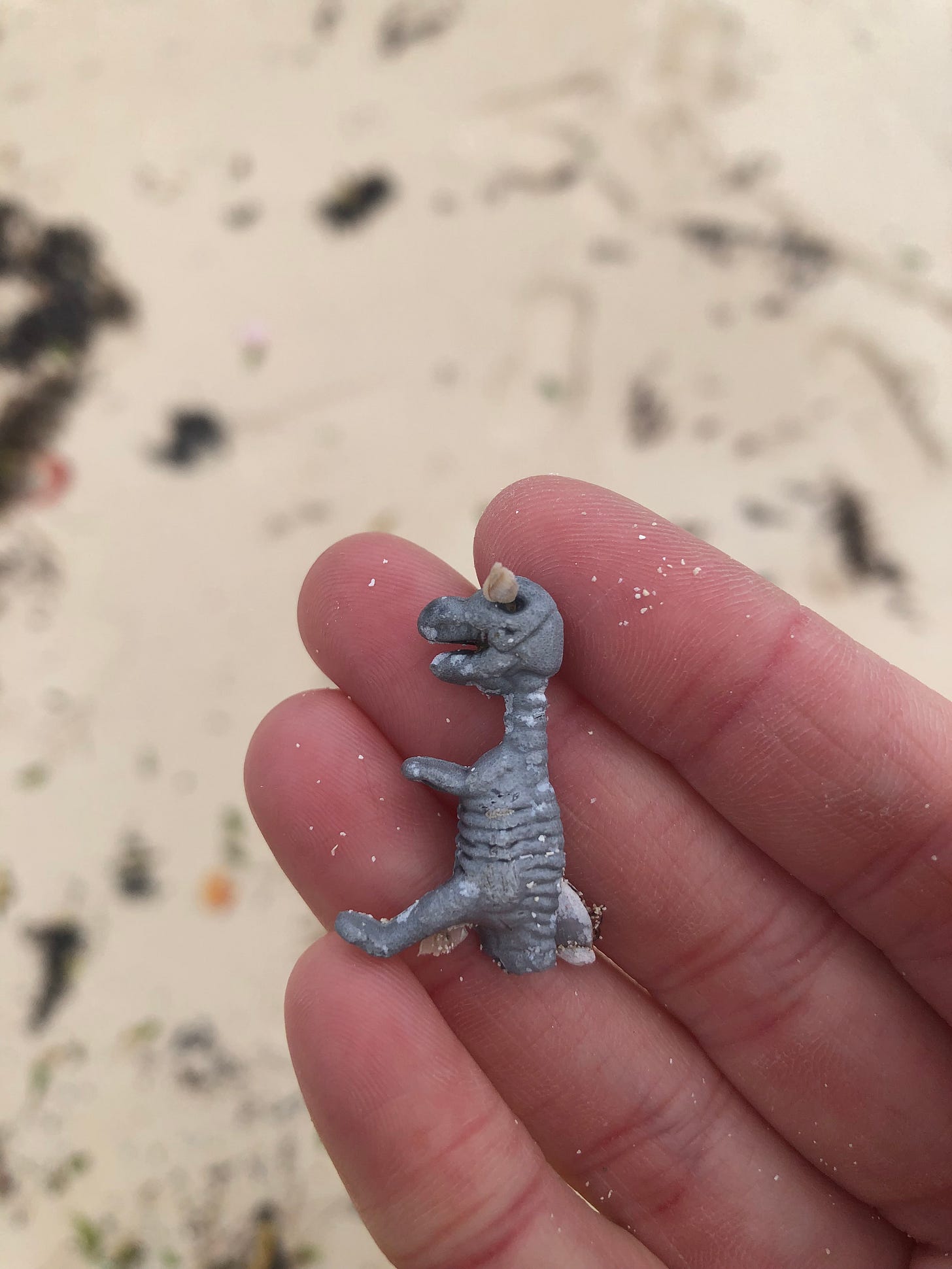



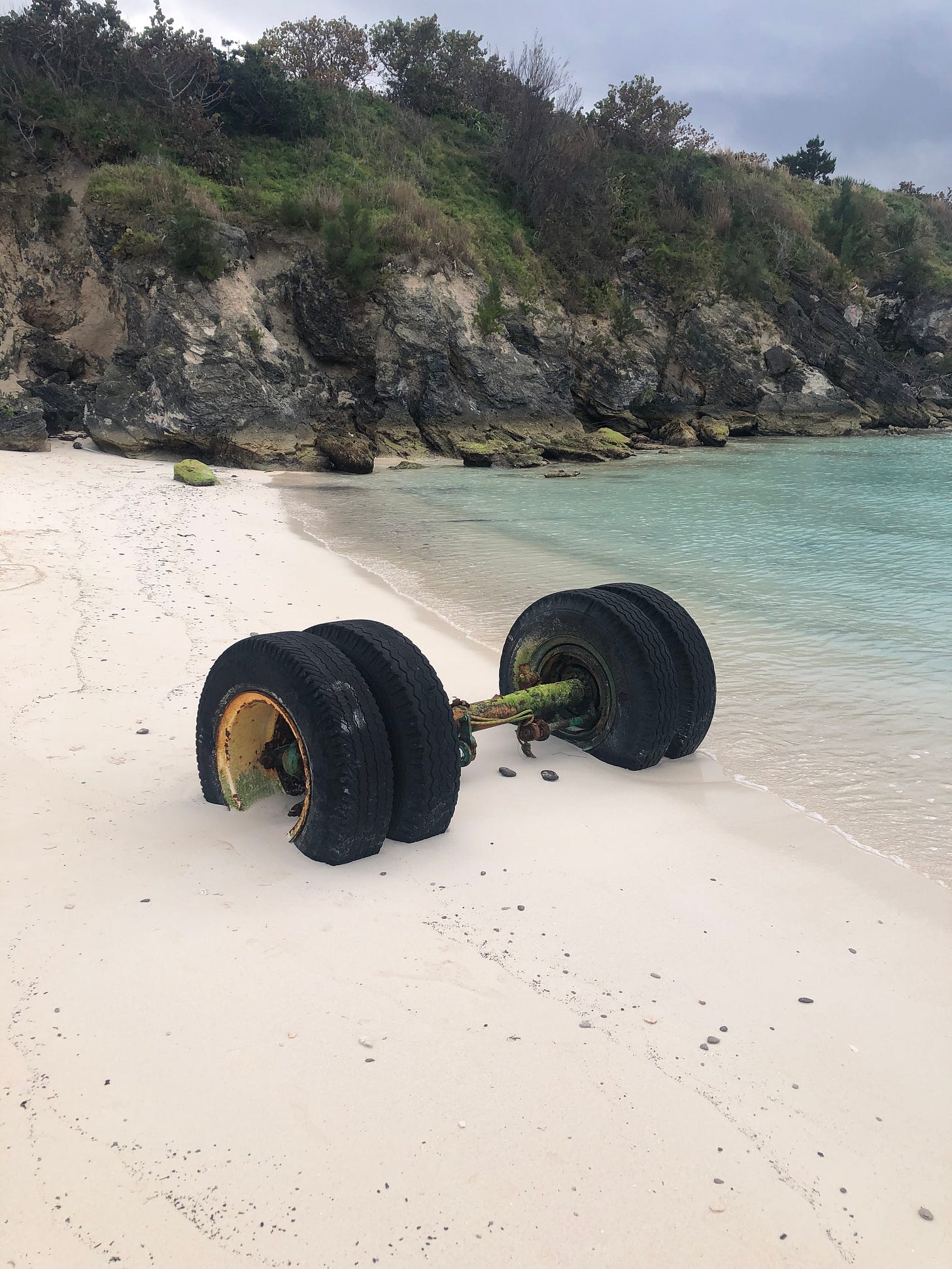


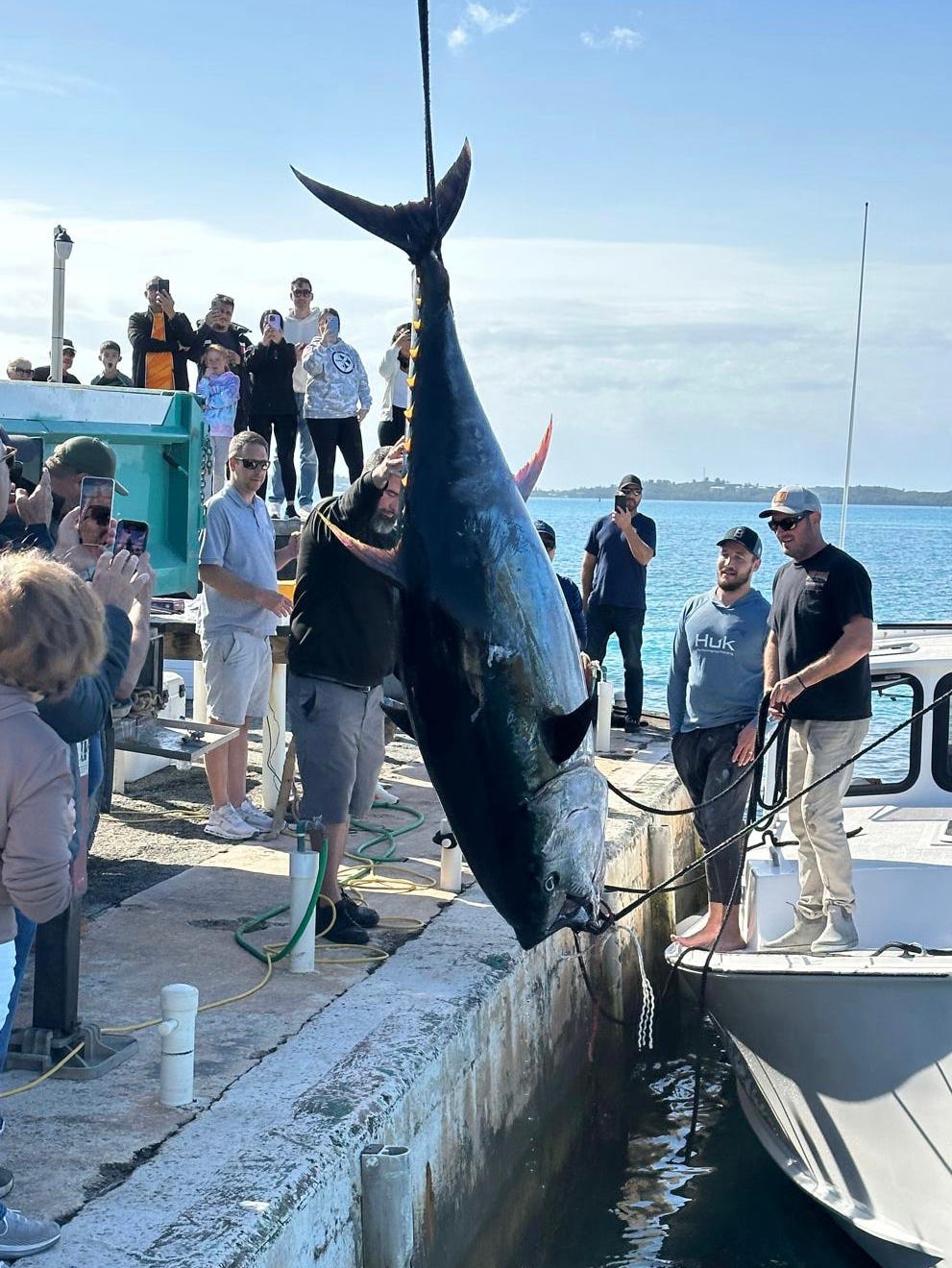






Delightful from start to finish